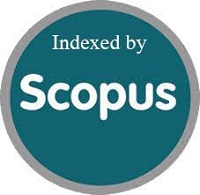Construct Validity of Group Resilience Measurement Scale in Indonesia
DOI:
https://doi.org/10.15408/jp3i.v11i1.20713Keywords:
community resilience, confirmatory factor analysis, Indonesian demographicsAbstract
Humans will always face challenges that interfere with their course of life. Their responses to face those challenges or resilience are varied, depending on environmental aspects. The discussion on resilience is used to understand the reasons why individuals can be more resistant to challenges than other individuals. The aspect that influences and forms resilience is the environment. One form of the influential environment is the environment in which humans are born or reside. The demographic characteristics of the Indonesian region are one form of the physical environment which is divided by geography (West Indonesia, Central Indonesia, and East Indonesia) and by type of administrative area (District and Municipalities). This study employed a quantitative approach to measure the construct validity of the CCRAM instrument which has been translated into Indonesian. This study involved 518 people (N = 518) as participants who came from three regions of Indonesia, namely East, Central, and West Indonesia. The research instrument was a questionnaire containing statements/items related to community resilience. After the data were collected online, Confirmatory Factor Analysis (CFA) was conducted to check the validity of each item on each dimension/construct. The results indicate that all dimensions and items were declared to meet the fit or valid criteria.
References
Braun-Lewensohn, O., & Sagy, S. (2014). Community resilience and sense of coherence as protective factors in explaining stress reactions: Comparing cities and rural communities during missiles attacks. Community Mental Health Journal, 50(2), 229–234. https://doi.org/10.1007/s10597-013-9623-5
Clark-Ginsberg, A., McCaul, B., Bremaud, I., Cáceres, G., Mpanje, D., Patel, S., & Patel, R. (2020). Practitioner approaches to measuring community resilience: The analysis of the resilience of communities to disasters toolkit. International Journal of Disaster Risk Reduction, 50. https://doi.org/10.1016/j.ijdrr.2020.101714
Cui, K., & Han, Z. (2019). Cross-cultural adaptation and validation of the 10-item conjoint community resiliency assessment measurement in a community-based sample in Southwest China. International Journal of Disaster Risk Science, 10(4), 439–448. https://doi.org/10.1007/s13753-019-00240-2
Cutter, S. L., Ash, K. D., & Emrich, C. T. (2016). Urban–rural differences in disaster resilience. Annals of the American Association of Geographers, 106(6), 1236–1252. https://doi.org/10.1080/24694452.2016.1194740
Gras, M. E., Font-Mayolas, S., Baltasar, A., Patiño, J., Sullman, M. J. M., & Planes, M. (2019). The Connor-Davidson Resilience Scale (CD-RISC) amongst young Spanish adults. Clinica y Salud, 30(2), 73–79. https://doi.org/10.5093/clysa2019a11
Hu, T., Zhang, D., & Wang, J. (2015). A meta-analysis of the trait resilience and mental health. Personality and Individual Differences, 76(December 2021), 18–27. https://doi.org/10.1016/j.paid.2014.11.039
Junaidi, Sembiring, Y. R. v, & Siregar, T. H. (2015). The impact of geographical location on the annual production pattern of hevea brasiliensis: Production pattern and its impact on the global market. Warta Perkaretan, 34(2), 127–136.
Kimhi, S. (2014). Levels of resilience: Associations among individual, community, and national resilience. Journal of Health Psychology. https://doi.org/10.1177/1359105314524009
Kimhi, S., Eshel, Y., Leykin, D., & Lahad, M. (2017). Individual, community, and national resilience in peace time and in the face of terror: A longitudinal study. Journal of Loss and Trauma, 22(8), 698–713. https://doi.org/10.1080/15325024.2017.1391943
Kimhi, S., Gorosit, M., & Eshel, Y. (2013). Demographic variables as antecedents of Israeli community and national resilience. Journal of Community Psychology, 41(5), 631–643. https://doi.org/10.1002/jcop.21561
Kimhi, S., Marciano, H., Eshel, Y., Emeritus, P., & Adini, B. (2020). Resilience and demographic characteristics predicting distress during the COVID-19 crisis. Social Science & Medicine, 265. https://doi.org/https://doi.org/10.1016/j.socscimed.2020.113389
Leykin, D., Lahad, M., Cohen, O., Goldberg, A., & Aharonson-Daniel, L. (2013). Conjoint Community Resiliency Assessment Measure-28/10 Items (CCRAM28 and CCRAM10): A Self-report Tool for Assessing Community Resilience. American Journal of Community Psychology, 52(3–4), 313–323. https://doi.org/10.1007/s10464-013-9596-0
Martínez-Martí, M. L., & Ruch, W. (2016). Character strengths predict resilience over and above positive affect, self-efficacy, optimism, social support, self-esteem, and life satisfaction. The Journal of Positive Psychology, 12(2), 110–119. https://doi.org/10.1080/17439760.2016.1163403
Maulidya, M., & Eliana, R. (2013). Gambaran resiliensi perantau minangkabau yang berwirausaha di Medan. Psikologia, 8(1), 34–39.
Plough, A., Fielding, J. E., Chandra, A., Williams, M., Eisenman, D., Wells, K. B., Law, G. Y., Fogleman, S., & Magaña, A. (2013). Building community disaster resilience: Perspectives from a large urban county department of public health. American Journal of Public Health, 103(7), 1190–1197. https://doi.org/10.2105/AJPH.2013.301268
Rapaport, C., Hornik-Lurie, T., Cohen, O., Lahad, M., Leykin, D., & Aharonson-Daniel, L. (2018). The relationship between community type and community resilience. International Journal of Disaster Risk Reduction, 31(May), 470–477. https://doi.org/10.1016/j.ijdrr.2018.05.020
Shalih, O., Tambunan, M. P., & Tambunan, R. P. (2019). Membangun ketahanan (resiliensi) bencana pada kawasan pariwisata (Studi Kasus: Kabupaten Pandeglang pasca tsunami Selat Sunda 2018). The 6th Annual Scientific Meeting on Disaster Research 2019.
Suparmini, & Wijayanti, A. T. (2015). Masyarakat desa dan kota (tinjauan geografis, sosiologis, dan historis). In Buku Ajar. Fakultas Ilmu Sosial Universitas Negeri Yogyakarta.
Thompson, B. (2004). Exploratory and confirmatory analysis. American Psychological Association.
Utami, C. T., & Helmi, A. F. (2017). Self-efficacy dan resiliensi: Sebuah tinjauan meta-analisis. Buletin Psikologi, 25(1), 54–65. https://doi.org/10.22146/buletinpsikologi.18419
Wardhani, R. H., Sunarti, E., & Muflikhati, I. (2017). Ancaman, faktor protektif, aktivitas, dan resiliensi remaja: Analisis berdasarkan tipologi sosiodemografi. Jurnal Ilmu Keluarga Dan Konsumen, 10(1), 47–58.



